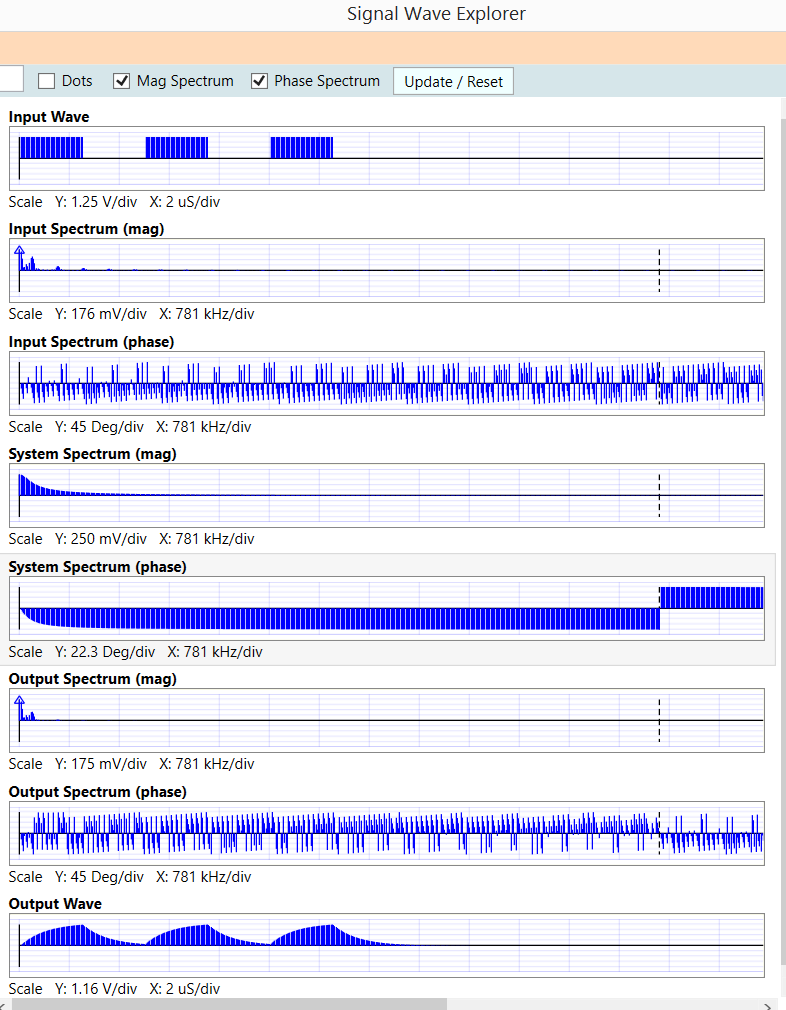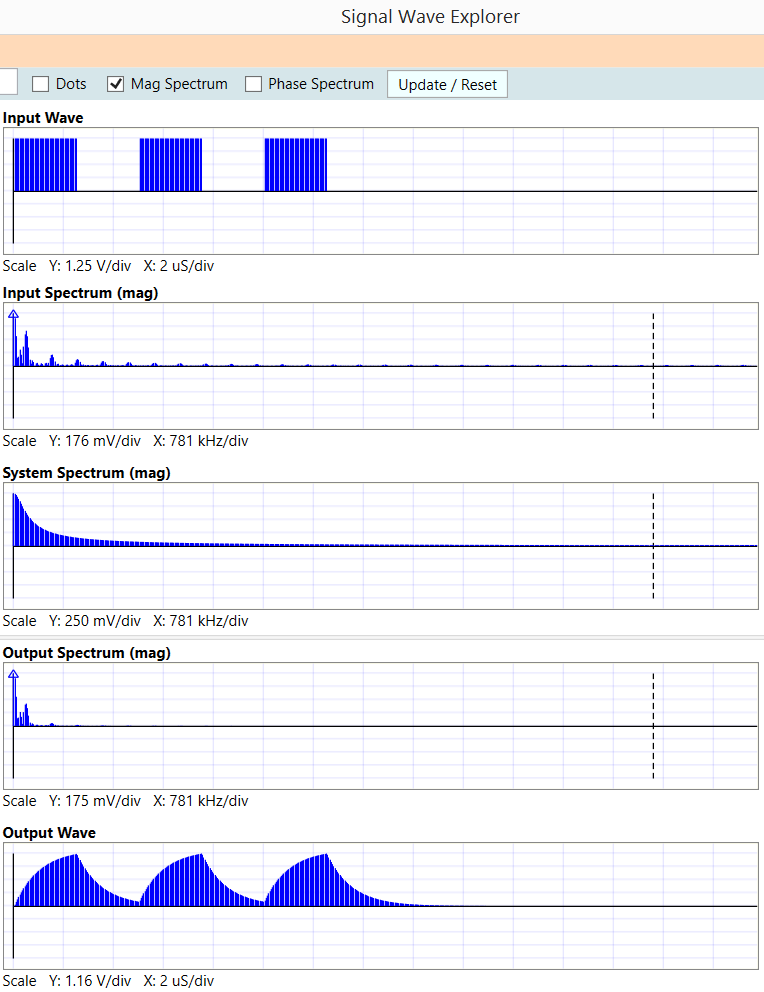Here is Signal Wave Explorer, using FFT, to model 3 pulses thru a LPF. On right side of the plots is a dotted vertical line, the Nyquist frequency. In the Mag/Phase that is the mirroring frequency, indeed shown here.
Shown below these 8 plots is screenshot with just InputWaveform, Magnitude plots, and OutputWaveform. Examine the OutputWaveform carefully, particularly the 3rd output pulse, and you'll see that final decay to zero amplitude. The first 2 pulses are not allowed enough time to decay to zero amplitude.
Thus we have used the FFT to fully capture the transient behavior.
And now without the Phase plots. In the InputSpectrum, you see the sin(x)/x components of the squarewave, with amplitudes decaying as 1/Harmonic#. The tool --SWE--- simply multiplies this InputSpectrum with the SystemSpectrum, producing the OutputSpectrum; magnitudes are multiplied; phases are added. Then OutputSpectrum undergoes InverseFFT, to produce the OutputWave.


